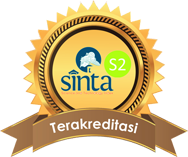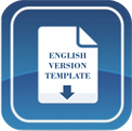Project Based Practicum Student Worksheet on Buffer Solution Material
DOI:
https://doi.org/10.15575/jtk.v8i2.24737Keywords:
buffer solution, project-based learning, student worksheetAbstract
Practicum-based worksheets have been proven to improve students' thinking abilities. This research aims to describe the design and determine the feasibility of a project-based practical worksheet on buffer solution material. This research uses the Borg & Gall development model which consist of analyzing potential problems stage, data collection, product design, product marketing, product analysis and revision. The research subjects were 11th grade students from two different senior high school. The validation results show that the project learning-based student worksheet is classified as very valid with a score of 93 for small scale, 96 for medium scale, and 99 for large scale. The media was declared suitable for use based on the results of trials on small, medium and large scale students in the very good category with scores of 50, 51 and 55 respectively. This shows that project-based practical worksheets on buffer solution material are suitable for application to students.
References
Alti, R. M. (2021). Development of Guided Inquiry-Based Worksheet as Teaching Materials on Elements, Compounds, and Periodic Table. JTK (Jurnal Tadris Kimiya), 6(1), 124–131. https://doi.org/10.15575/jtk.v6i1.10377
Aprianty, H., Gani, A., & Pada, A. U. T. (2020). Implementation of project-based learning through stem approach to improve students’ science process skills and learning outcomes. Jurnal Tadris Kimiya, 5(2), 144–152. https://doi.org/https://doi.org/10.15575/jtk.v5i2.8370
Çelikler, D. (2010). The Effect of Worksheets Developed for the Subject of Chemical Compounds on Student Achievement and Permanent Learning. Educational Research Association The International Journal of Research in Teacher Education, 1(1), 42–51. Retrieved from https://ijrte.penpublishing.net/files/5/manuscript/manuscript_101/ijrte-101-manuscript-103943.pdf
Desiana, G. ., Sulastri, & Syahrial. (2022). Application of Project-Based Learning (PjBL) to Improve Critical Thinking Skills and Students’ Learning Independence on the Making of Colloids in Dispersion. JTK: Jurnal Tadris Kimiya, 7(1), 37–52. https://doi.org/https://doi.org/10.15575/jtk.v7i1.13395 1.
Evans, R., & Cleghorn, A. (2022). Do student teachers see what learners see? – Avoiding instructional dissonance when designing worksheets. South African Journal of Childhood Education, 12(1), 1–10. https://doi.org/10.4102/sajce.v12i1.1015
Fatisa, Y., & Br Galingging, E. A. (2021). Design and Trial of Electronic Smart Worksheets Based on POE (Predict, Observe, Explain) on Acid-Base Topic. JTK (Jurnal Tadris Kimiya), 6(1), 51–61. https://doi.org/10.15575/jtk.v6i1.9853
Gani, A., Safitri, R., & Mahyana, M. (2017). Improving the visual-spatial intelligence and results of learning of juniour high school students’ with multiple intelligences-based students worksheet learning on lens materials. Jurnal Pendidikan IPA Indonesia, 6(1), 16–22. https://doi.org/10.15294/jpii.v6i1.9594
Guo, P., Saab, N., Post, L. S., & Admiraal, W. (2020). A review of project-based learning in higher education: Student outcomes and measures. International Journal of Educational Research, 102, 1–13. https://doi.org/10.1016/j.ijer.2020.101586
Irsalina, A., & Dwiningsih, K. (2018). Practicality Analysis of Developing the Student Worksheet Oriented Blended Learning in Acid Base Material. JKPK (Jurnal Kimia Dan Pendidikan Kimia), 3(3), 171–182. https://doi.org/10.20961/jkpk.v3i3.25648
Kokotsaki, D., Menzies, V., & Wiggins, A. (2016). Improving Schools Project-based learning : A review of the literature. 1–11. https://doi.org/10.1177/1365480216659733
Kuo, H. C., Tseng, Y. C., & Yang, Y. T. C. (2019). Promoting college student’s learning motivation and creativity through a STEM interdisciplinary PBL human-computer interaction system design and development course. Thinking Skills and Creativity, 31, 1–10. https://doi.org/10.1016/j.tsc.2018.09.001
Miller, E. C., & Krajcik, J. S. (2019). Promoting deep learning through project- based learning : a design problem. Disciplinary and Interdisciplinary Science Education Research, 1(7), 1–10. Retrieved from https://diser.springeropen.com/articles/10.1186/s43031-019-0009-6
Mutmainah, S., Usman, U., & Nurhadi, M. (2018). Development of Applicative-Integrative Student Worksheet Based on Scientific Approach on Reaction Rate Subject. JKPK (Jurnal Kimia Dan Pendidikan Kimia), 3(1), 6–12. https://doi.org/10.20961/jkpk.v3i1.11982
Noprinda, C. T., & Soleh, S. M. (2019). Pengembangan lembar kerja peserta didik (LKPD) berbasis higher order thinking skill (HOTS). Indonesian Journal of Science and Mathematics Education, 2(2), 168-176. http://dx.doi.org/10.24042/ijsme.v2i2.4342
Nuha, D. N., Febriana, B. W., & Merdekawati, K. (2020). Implementation of Project Based Learning (PjBL) Learning Model Through Wall Magazine Towards Learning Achievement and Collaborative Skills. International Journal of Chemistry Education Research, 4(1), 37–41. https://doi.org/10.20885/ijcer.vol4.iss1.art6
Nurazlina, Asyhar, R., & Ernawati, M. D. W. (2022). Pengembangan LKPD Larutan Penyangga Berbasis Proyek yang Terintegrasi Nilai Karakter Development of Project-Based Buffer Solution Worksheets the Integrated Character Values. Jurnal Penelitian Pendidikan, Psikologi Dan Kesehatan, 3(3), 251–256. Retrieved from https://www.jurnalp3k.com/index.php/J-P3K/article/view/192
Nurhikmayati, I., & Sunendar, A. (2020). Pengembangan Project Based Learning Berbasis Kearifan Lokal Berorientasi pada Kemampuan Berpikir Kreatif dan Kemandirian Belajar Mosharafa : Jurnal Pendidikan Matematika Mosharafa : Jurnal Pendidikan Matematika. Jurnal Pendidikan Matematika, 9(1), 1–12. Retrieved from https://onesearch.id/Record/IOS15444.article-604?widget=1&library_id=2760
Oktasari, D., Jumadi, Warsono, Hariadi, M. H., & Syari, E. L. (2019). 3D Page-Flipped Worksheet on Impulse-Momentum To Develop Students’ Scientific Communication Skills. Jurnal Pendidikan IPA Indonesia, 8(2), 211–219. https://doi.org/10.15294/jpii.v8i2.15737
Pratama, R. A., & Saregar, A. (2019). Pengembangan Lembar Kerja Peserta Didik (LKPD) Berbasis Scaffolding Untuk Melatih Pemahaman Konsep. Indonesian Journal of Science and Mathematics Education, 2(1), 84–97. https://doi.org/10.24042/ijsme.v2i1.3975
Rauziani, Yusrizal, & Nurmaliah, C. (2016). Implementasi Model Project Based Learning ( PjBL ) dalam meningkatkan hasil belajar dan berpikir kritis. Pendidikan, Jurnal Indonesia, Sains, 04(02), 39–44. Retrieved from https://jurnal.unsyiah.ac.id/JPSI/article/view/7577/0
Refitaniza, & Effendi. (2022). Pengembangan LKPD Terintegrasi STEAM-PjBL Pada Materi Larutan Penyangga Sma. Jurnal Ilmiah Universitas Batanghari Jambi, 22(3), 1662–1667. https://doi.org/10.33087/jiubj.v22i3.2682
Riduwan. (2012). Skala pengukuran variabel-variabel penelitian. Yogyakarta: Alfabeta.
Sugiyono. (2019). Metode penelitan kuantitatif ,kualitatif, R&D. CV. Yogyakarta: Alfabeta.
Susilawati, Copriady, J., Erna, M., Hasnah, Rendra, Nisa, N. A., & Rahmatya, O. (2020). Application of Constructivism – Based Students ’ Worksheet To Increase students activities and learning outcomes. 1(5), 1–13. https://doi.org/10.15575/jtk.v5i1.5607
Tsybulsky, D., & Muchnik-Rozanov, Y. (2019). The development of student-teachers’ professional identity while team-teaching science classes using a project-based learning approach: A multi-level analysis. Teaching and Teacher Education, 79, 48–59. https://doi.org/10.1016/j.tate.2018.12.006
Wardani, S., & Firdaus, L. (2019). Pengaruh model inkuiri terbimbing berbasis blended learning terhadap kemampuan kognitif-psikomotor pada materi larutan penyangga. Jurnal Tadris Kimiya, 4(2), 189–201. Retrieved from https://journal.uinsgd.ac.id/index.php/tadris-kimiya/article/view/5404/pdf
Widoyoko, S. E. P. (2012). Teknik Penyusunan Instrumen Penelitian. Yogyakarta: Pustaka Pelajar.
Yildirim, N., Kurt, S., & Ayas, A. (2011). The effect of the worksheets on students’ achievement in chemical equilibrium. Journal of Turkish Science Education, 8(3), 44–58. Retrieved from https://www.researchgate.net/publication/268436313_The_Effect_Of_The_Worksheets_On_Students'_Achievement_In_Chemical_Equilibrium
Yustina, & Kapsin. (2017). THE Implementation Of Constructivism-Based Student Worksheets Within The Theme ‘The Prevention Of Land And Forest Fire’ In Science Education For Seventh Graders In Riau. 6(2), 298–305. https://doi.org/10.15294/jpii.v6i2.10573
Downloads
Published
How to Cite
Issue
Section
Citation Check
License
Authors who publish with this journal agree to the following terms:
- Authors retain copyright and grant the journal right of first publication with the work simultaneously licensed under a Creative Commons Attribution-ShareAlike that allows others to share the work with an acknowledgement of the work's authorship and initial publication in this journal.
- Authors are able to enter into separate, additional contractual arrangements for the non-exclusive distribution of the journal's published version of the work (e.g., post it to an institutional repository or publish it in a book), with an acknowledgement of its initial publication in this journal.
- Authors are permitted and encouraged to post their work online (e.g., in institutional repositories or on their website) prior to and during the submission process, as it can lead to productive exchanges, as well as earlier and greater citation of published work (See The Effect of Open Access).








